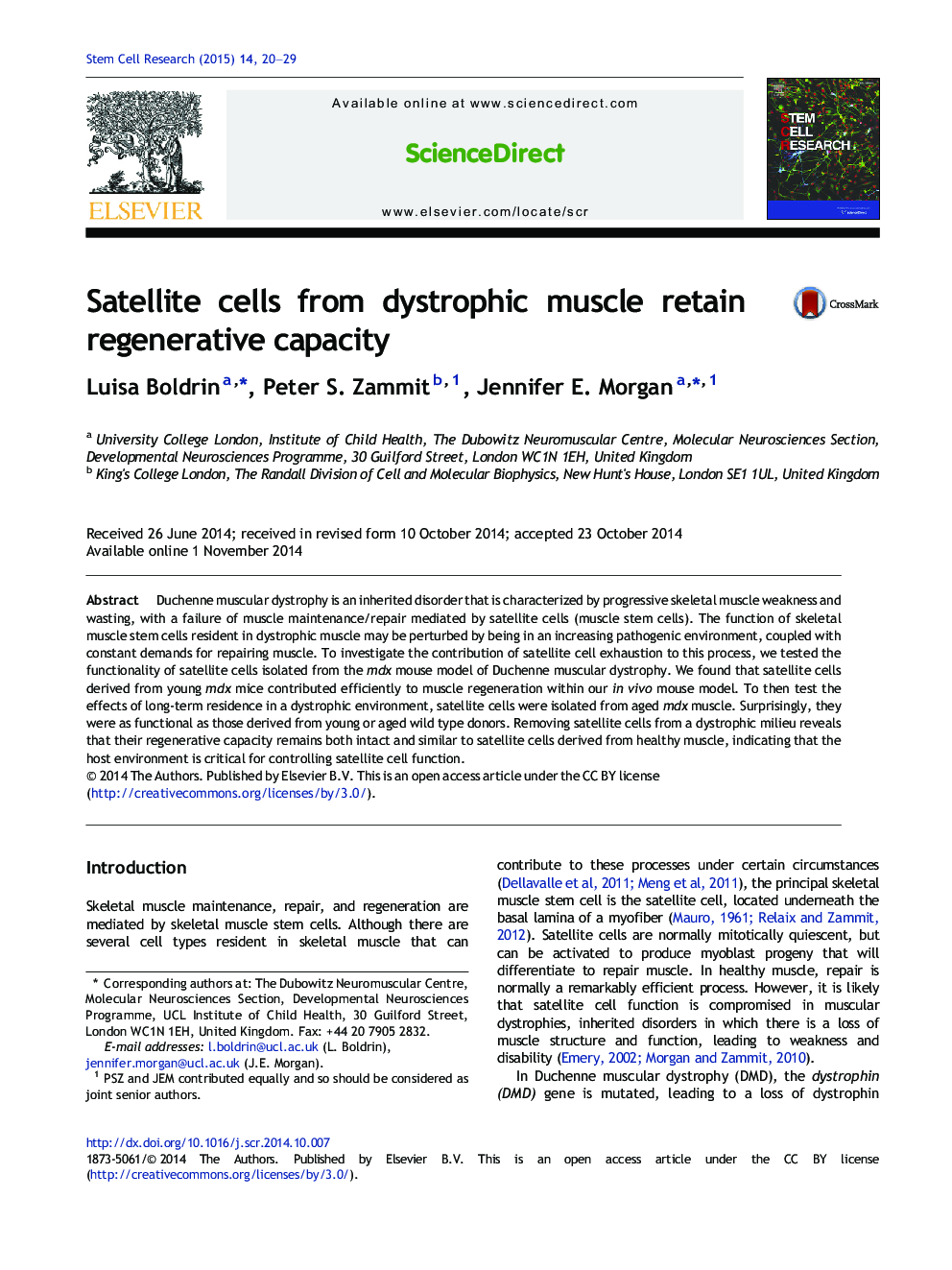| Article ID | Journal | Published Year | Pages | File Type |
|---|---|---|---|---|
| 2094227 | Stem Cell Research | 2015 | 10 Pages |
•Grafted mdx satellite cells regenerate muscle as well as wild-type satellite cells.•Aged mdx myofibers bear more satellite cells than aged wild type fibers.•mdx satellite cells retain their ability to activate.•Aged mdx satellite cells are robustly regenerative in vivo.
Duchenne muscular dystrophy is an inherited disorder that is characterized by progressive skeletal muscle weakness and wasting, with a failure of muscle maintenance/repair mediated by satellite cells (muscle stem cells). The function of skeletal muscle stem cells resident in dystrophic muscle may be perturbed by being in an increasing pathogenic environment, coupled with constant demands for repairing muscle. To investigate the contribution of satellite cell exhaustion to this process, we tested the functionality of satellite cells isolated from the mdx mouse model of Duchenne muscular dystrophy. We found that satellite cells derived from young mdx mice contributed efficiently to muscle regeneration within our in vivo mouse model. To then test the effects of long-term residence in a dystrophic environment, satellite cells were isolated from aged mdx muscle. Surprisingly, they were as functional as those derived from young or aged wild type donors. Removing satellite cells from a dystrophic milieu reveals that their regenerative capacity remains both intact and similar to satellite cells derived from healthy muscle, indicating that the host environment is critical for controlling satellite cell function.
